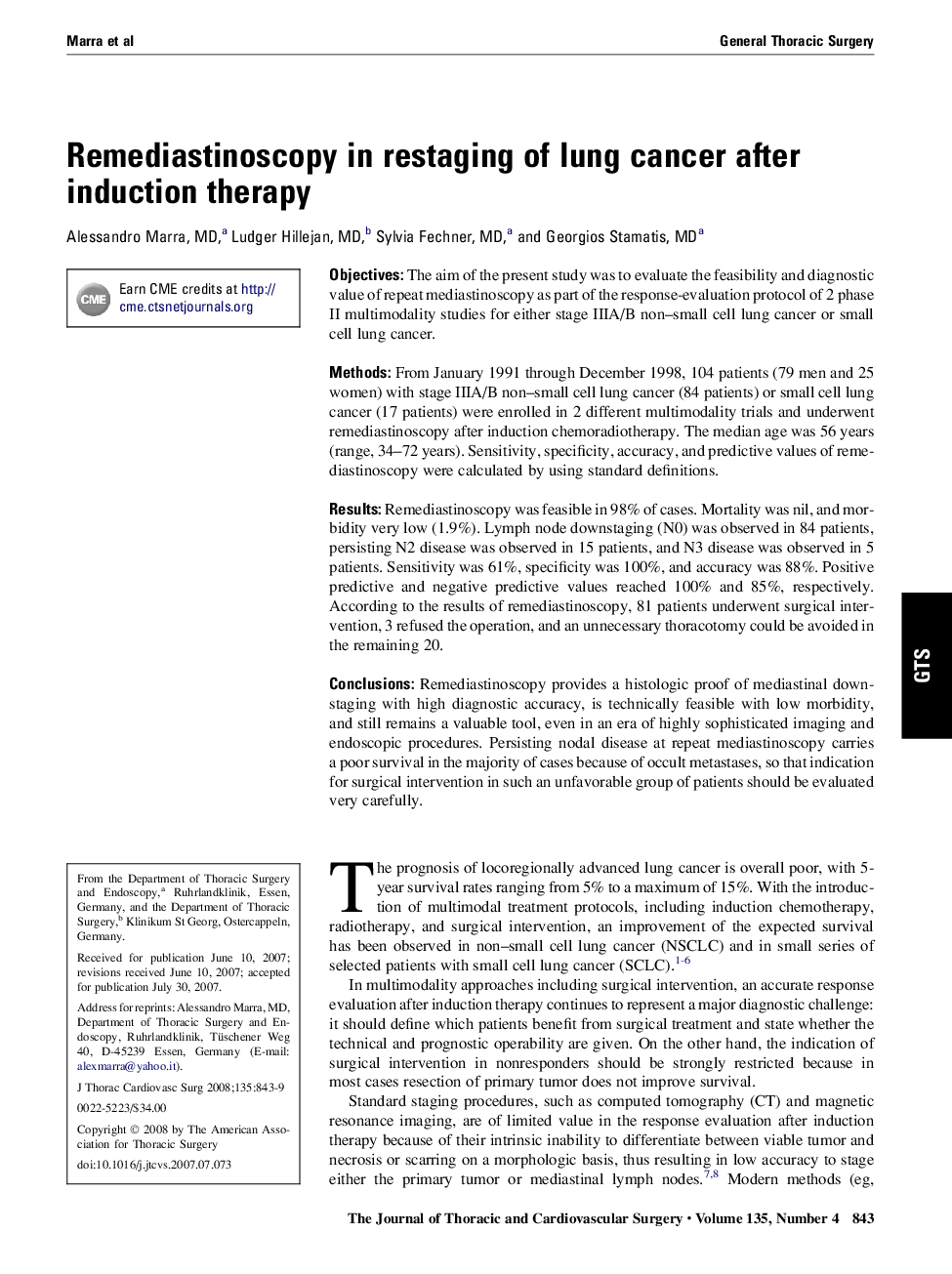| کد مقاله | کد نشریه | سال انتشار | مقاله انگلیسی | نسخه تمام متن |
|---|---|---|---|---|
| 2986595 | 1578687 | 2008 | 7 صفحه PDF | دانلود رایگان |

ObjectivesThe aim of the present study was to evaluate the feasibility and diagnostic value of repeat mediastinoscopy as part of the response-evaluation protocol of 2 phase II multimodality studies for either stage IIIA/B non–small cell lung cancer or small cell lung cancer.MethodsFrom January 1991 through December 1998, 104 patients (79 men and 25 women) with stage IIIA/B non–small cell lung cancer (84 patients) or small cell lung cancer (17 patients) were enrolled in 2 different multimodality trials and underwent remediastinoscopy after induction chemoradiotherapy. The median age was 56 years (range, 34–72 years). Sensitivity, specificity, accuracy, and predictive values of remediastinoscopy were calculated by using standard definitions.ResultsRemediastinoscopy was feasible in 98% of cases. Mortality was nil, and morbidity very low (1.9%). Lymph node downstaging (N0) was observed in 84 patients, persisting N2 disease was observed in 15 patients, and N3 disease was observed in 5 patients. Sensitivity was 61%, specificity was 100%, and accuracy was 88%. Positive predictive and negative predictive values reached 100% and 85%, respectively. According to the results of remediastinoscopy, 81 patients underwent surgical intervention, 3 refused the operation, and an unnecessary thoracotomy could be avoided in the remaining 20.ConclusionsRemediastinoscopy provides a histologic proof of mediastinal downstaging with high diagnostic accuracy, is technically feasible with low morbidity, and still remains a valuable tool, even in an era of highly sophisticated imaging and endoscopic procedures. Persisting nodal disease at repeat mediastinoscopy carries a poor survival in the majority of cases because of occult metastases, so that indication for surgical intervention in such an unfavorable group of patients should be evaluated very carefully.
Journal: The Journal of Thoracic and Cardiovascular Surgery - Volume 135, Issue 4, April 2008, Pages 843–849